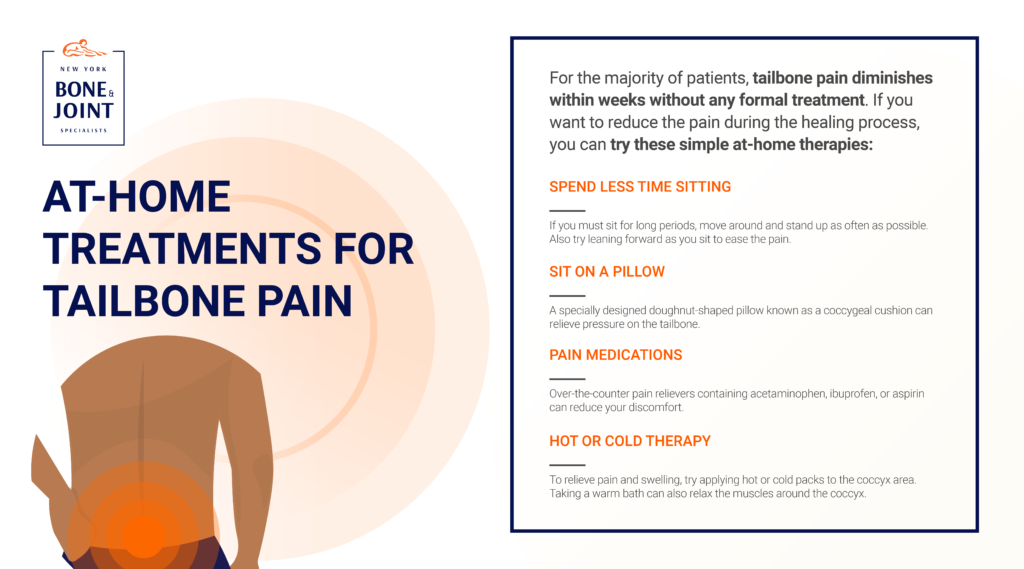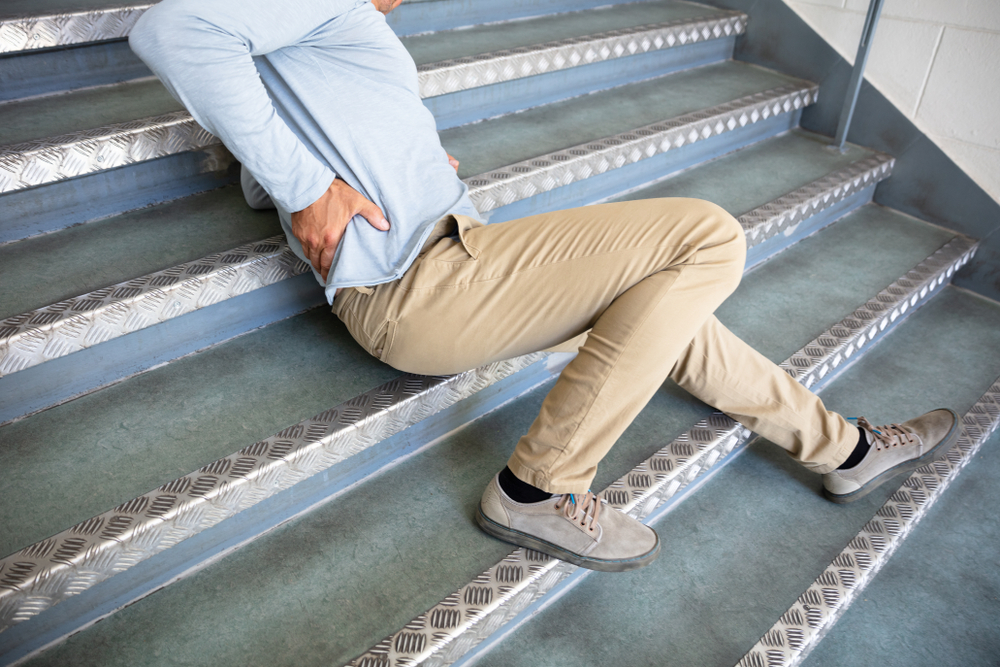Although tailbone pain is usually temporary, it can still be very uncomfortable. Luckily, there are measures you can take to ease the discomfort.
Many people have experienced tailbone pain, but far fewer understand what it actually is or what’s causing it. Tailbone pain, also known as coccydynia, is defined as a dull ache or sharp pain that radiates from the coccyx. The coccyx is a bony structure at the end of the spine just above the cleft of the buttocks consisting of three to five vertebrae or bones connected to a network of tendons, ligaments, and muscles.
When you sit, the coccyx bears most of your weight. Because of that function, if you hurt or strain your tailbone or the tissues around it, you might experience pain when you rise from sitting to standing, or after sitting for a prolonged period. Bowel movements and intercourse may also cause tailbone pain. Fortunately, tailbone pain is rarely a permanent condition. It will typically resolve itself within a few weeks. If you want to ease the discomfort and sit more comfortably during the healing process, there are a few at-home methods you can try.
Read on to learn more about the causes and treatments of tailbone pain.
What Causes Tailbone Pain
Tailbone pain usually develops from one of several causes. The most common are:
Trauma. A bad fall that lands you hard on your coccyx may cause a fracture or a dislocation in this sensitive area. Even a slight bruise can lead to days of tailbone pain.
Prolonged Sitting. Sitting for long periods, especially on a narrow, hard surface, can irritate the coccyx, leading to pain. This is a common concern for people who sit at a desk all day.
Repetitive Motions. Certain activities that force you to move back and forth continually, like rowing or biking, can strain the tendons and muscles around the coccyx, leading to pain.
Childbirth. Hormones released during pregnancy relax the soft tissues around the tailbone. Although necessary to allow for the child to move through the birth canal, the ligaments and muscles may be stretched too far, making the coccyx unstable and painful.
Weight. Being overweight or underweight can affect your tailbone. Excess pounds may push the coccyx out of position. On the other hand, if you are underweight, you may lack the fat needed to cushion the tailbone from irritating nearby tendons, ligaments, and muscles. Either of these scenarios can lead to significant pain.
Bone Spurs. Thick outgrowths of bone can sometimes form at the tip of the tailbone. The bone spur can then pinch the tissues. When this happens, the pain will be most pronounced when you sit upright or lean backward.
Other, less common causes of tailbone pain include tumors or infections. To diagnose the cause of your tailbone pain, your doctor will inquire about any recent falls and perform a physical examination. They may also order imaging tests (X-ray, CT scan, MRI) to rule out a fracture or other causes.
At-Home Treatments for Tailbone Pain
For the majority of patients, tailbone pain diminishes within weeks without any formal treatment. If you want to reduce the pain during the healing process, you can try these simple at-home therapies:

Further Treatments for Tailbone Pain
If at-home methods fail to relieve the pain, your doctor may suggest physical therapy to stretch and strengthen the muscles of the lower back and pelvis. Pelvic floor relaxation exercises, such as deep breathing, and massaging the muscles around the tailbone can also help relieve pain. For temporary relief of more extreme pain, your doctor may inject a nerve-blocking agent in the coccyx area.
In extremely limited instances when other remedies are ineffective, a coccygectomy, or removal or the coccyx, may be recommended. But that is only as a last resort and rarely performed.
If you’re experiencing tailbone pain and want to find relief, schedule an appointment with a doctor right away. At New York Bone & Joint Specialists, we are experts in the causes and treatments of all kinds of back pain — including tailbone pain. If you’re experiencing pain in your lower back and buttocks, we can help you overcome the discomfort and get on with living your life to the fullest. Contact us today for a consultation.




